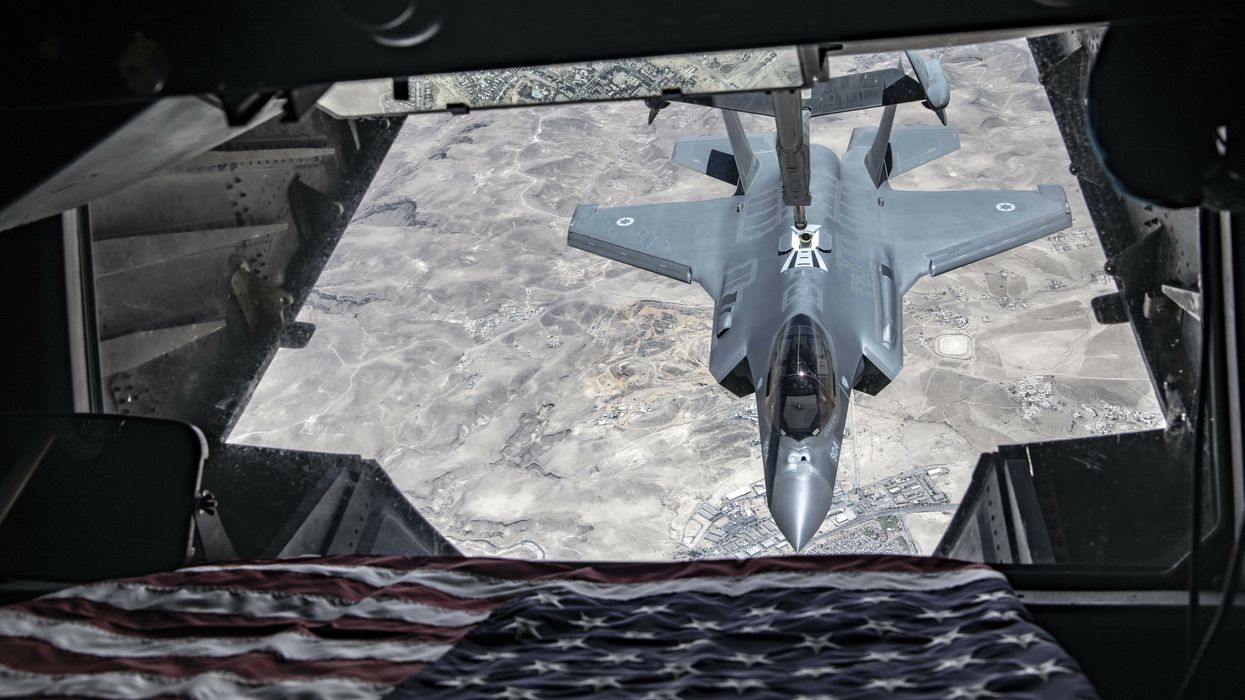Advocates of ever-higher Pentagon spending frequently argue that we must throw more money at the department to “support the troops.” But recent budget proposals and a new research paper issued by the Quincy Institute and the Costs of War Project at Brown University suggest otherwise.
The paper, which I co-authored with Stephen Semler, found that 54% of the Pentagon’s $4.4 trillion in discretionary spending from 2020 to 2024 went to military contractors. The top five alone — Lockheed Martin ($313 billion), RTX (formerly Raytheon, $145 billion), Boeing ($115 billion), General Dynamics ($116 billion), and Northrop Grumman ($81 billion) – received $771 billion in Pentagon contracts over that five year period.
This huge infusion of funds to arms makers comes at the expense of benefits for active duty personnel and veterans of America’s post-9/11 wars. Despite pay increases in recent years, there are still hundreds of thousands of military families who rely on food stamps, live in subpar housing, or suffer from other financial hardships.
Meanwhile, there are plans to cut tens of thousands of personnel at the Veterans Administration, close Veterans health centers, and even to reduce staffing at veteran suicide hotlines. And many of the programs veterans and their families depend on — from food stamps to Medicaid and more — are slated for sharp cuts in the budget bill signed by President Trump earlier this month.
It would be one thing if all of the hundreds of billions of dollars lavished on weapons contractors were being well spent in service of a better defense. But they are not. Overpriced and underperforming weapons systems like the F-35 combat aircraft and the Sentinel intercontinental ballistic missile (ICBM) have shown themselves to be quite effective at consuming taxpayer dollars, even as the run huge cost overruns, suffer lengthy schedule delays, and, in the case of the F-35, are unavailable for use much of the time due to serious maintenance problems.
The problems with the Sentinel and the F-35 are likely to pale in comparison with the sums that may be wasted in pursuit of President Trump’s proposal for a leak-proof “Golden Dome” missile defense system, a costly pipe dream that many experts feel is both physically impossible and strategically unwise. In the more than four decades and hundreds of billions of dollars spent since Ronald Reagan’s pledge to build an impenetrable shield against incoming ICBMs, the Pentagon has yet to succeed in a test conducted under realistic conditions, and has even failed in a large number of the carefully scripted efforts.
And Golden Dome is more ambitious than Star Wars — it is supposed to intercept not just ICBMs, but hypersonic missiles, low-flying drones, and anything else that might be launched at the United States.
The good news is that if you are a weapons contractor, whether from the Big Five or the emerging military tech sector in Silicon Valley, Golden Dome will be a gold mine, regardless of whether it ever produces a useful defense system.
The Silicon Valley crowd fully acknowledges the problems current industry leaders have had in producing effective weapons at an affordable price, and they have an answer — give the money to them instead, and they will produce nimble, affordable, easily replaceable, software driven weapons that will restore America to a position of global primacy.
But the new guard is interested in much more than just building new products that they can sell to the Pentagon. The leaders of these emerging tech firms — led by Elon Musk at SpaceX, Peter Thiel at Palantir, and Palmer Luckey at Anduril — describe themselves as “founders” who will drag America from the doldrums to a position of unparalleled military dominance.
And unlike the CEOs of the big contractors, these new-age militarists are vocally hawkish. Some, like Palmer Luckey, have publicly gloated about how we can beat China in a war that he sees coming in the next few years, while others, like Palantir CEO Alex Karp, have cheered on Israel’s campaign of mass slaughter in Gaza, even going so far as to hold the company’s board meeting in Israel at the height of the war as a gesture of solidarity.
Even after Elon Musk’s messy public breakup with Donald Trump, the tech sector still has a leg up over the old guard in influence over his administration. Vice President J.D. Vance was employed, mentored, and financed by Palantir’s Peter Thiel, and former employees of Anduril, Palantir, and other military tech firms have been appointed to influential positions in the national security bureaucracy.
Meanwhile, Lockheed Martin and its cohort have a strong hand to play in Congress, where campaign contributions, hundreds of lobbyists, and suppliers located in a majority of states and districts give them immense power to keep their programs up and running, even in cases where the Pentagon and the military are trying to cancel or retire them.
Even at a proposed budget of $1 trillion a year, there may need to be some tradeoffs between legacy firms and new tech companies as the Pentagon chooses the next generation of weapons. The missing ingredient in all of this is the voice of the public, or strong input from members of Congress who care more about forging an effective defense strategy than they do about bringing Pentagon dollars to their areas.
When it comes to creating a defense system appropriate to the world we live in, it shouldn’t be about Lockheed Martin versus Palantir, it should be about common sense versus special interest pleading. Technology alone will not save us, as we have seen from the repeated failures of “miracle weapons” like the electronic battlefield in Vietnam, or President Reagan’s Star Wars initiative, or the advent of precision-guided munitions to actually win wars or achieve favorable outcomes from Vietnam to Iraq to Afghanistan.
Coming up with a defense plan that actually makes sense – and has any prospect of succeeding – will mean confronting the power and influence of the weapons contractors of all stripes, who now consume the bulk of the expenditures intended to promote the safety and security of America and its allies.
- New spending bill squanders billions on dysfunctional weapons programs ›
- Getting the defense budget right: A (real) grand total, over $1.4 trillion ›
















